Household Power Audit with the KILL-A-WATT Power Meter
The KILL-A-WATT household electrical outlet Power Meter is an excellent tool for auditing your household electricity usage. The true energy hogs are revealed after power metering each individual electrical device or appliance. I did a full power usage audit of my off-grid cabin. I was surprised to see what used the most power.
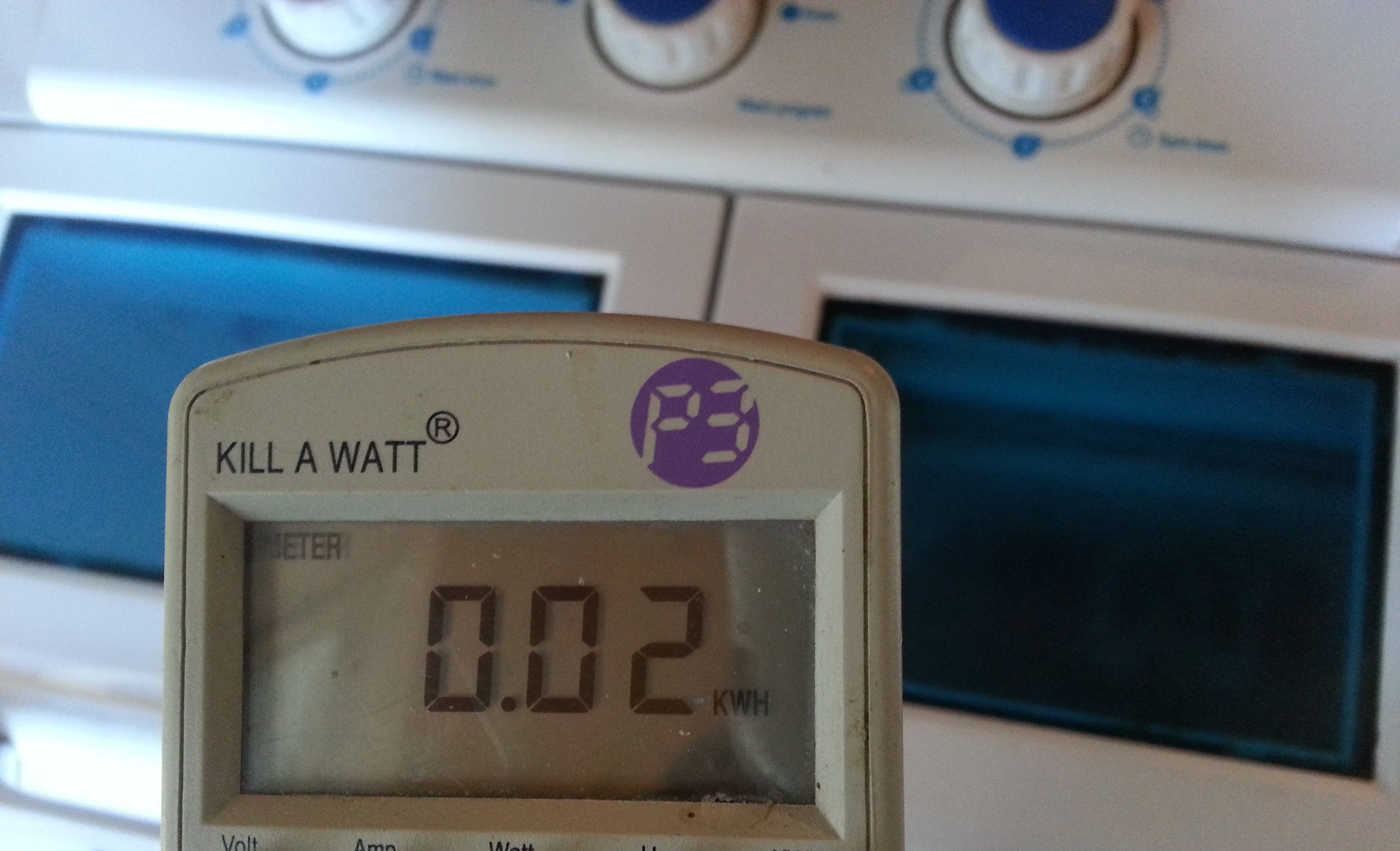
In the picture above you can see the compact clothes washer and spinner after completing a 15 minute load of laundry. Plugged in through the meter you can see that it used a grand total of 0.02 kilowatt hours of electricity.
KILL-A-WATT Power Meter
The KILL-A-WATT power meter plugs into a household electrical outlet. The front of the meter has an electrical outlet to plug in the device or appliance that you would like to audit. When a button is pressed, the corresponding meter reading will be displayed on the LCD screen.
Wireless Internet Router Audit
- 0.16 KWH x 24 Hours per day = 3.84 KWH per day
Below is a video displaying the data readings and results from the Wireless Internet Router audit.
You can see in the video that this device had been plugged in for 52 hours and 02 minutes. The KWH (Kilowatt Hour) displayed is a running hourly average.
On-demand appliances and devices that are always plugged in and draw variable amounts of power, like fridges, furnaces, air conditioners, and internet routers would have a more realistic KWH average reading if they were left plugged into the meter for 24 hours. Plugged in or turned on when desired appliances and devices like cell phones, laptops, washing machines, gaming consuls, and LCD TV monitors only need to be plugged into the device for 1 hour to read a realistic KWH average.
KILL-A-WATT Power Meter Buttons and Wireless Router readings:
- Volt: 119.5 Volts (standard north american household Voltage)
- Amp: ~0.06 amps
- Watt: ~4.0 watts
- VA is the apparent Power. (VA=Vrms Arms)
- Hz is frequency of the output voltage
- PF is Power Factor (PF=W/Vrms Arms)
- *KWH (Kilowatt Hour): 0.16 KWH
- *Hour: 52:02 (52 Hours and 02 Minutes)
*Mostly I'll be using the KWH button for this audit, checking the Hour reading to be sure that I leave the meter plugged in long enough for a realistic average KWH. Some information above is from the Power Meter Instruction Manual: http://www.p3international.com/manuals/p4400_manual.pdf
Power Audit Tools: KILL-A-WATT Power Meter and Extension Cord for tight spaces.

Fridge Audit:
- 0.13 KWH x 24 Hours per day = 3.12 KWH per day for the fridge

I was surprised to see that the reach-in chest freezer converted to a fridge used less power than the wireless internet router. The next devices and appliances are not always plugged in - they're optional and audited for hourly usage.
Clothes Washer and Spinner Audit
- 0.02 KWH for 15 minute laundry load with 1 wash and 3 spin and drain cycles
- x 2 (on average 2 small loads per day)
- = 0.04 KWH per day for clothes washing and spinning
In the quick video below I have the Power Meter display the fluctuating wattage usage of the wash and spin cycles.
10 inch Laptop Audit
- 0.02 KWH is the average hourly kilowatt usage - streaming a movie while charging
- 0.01 KWH is the average hourly kilowatt usage - streaming a movie full battery
- x 12 (12 hours per day of laptop usage)
- = 0.12 KWH per day for the laptop with various people watching movies, streaming netflix and prime video, web browsing, Steemit, and other computer stuff
Laptop using 18.2 watts - streaming a movie while charging - see picture below.
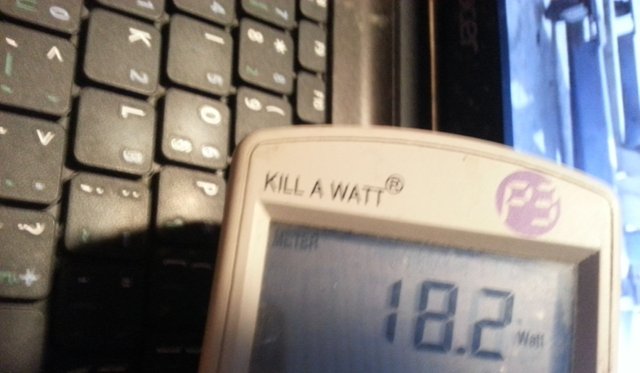
*Charging 20v Tool Battery
- 0.04 KWH is the average hourly kilowatt usage
- x 2 (2 hours to charge a 20v tool battery)
- = 0.08 KWH per day for 20v tool charging
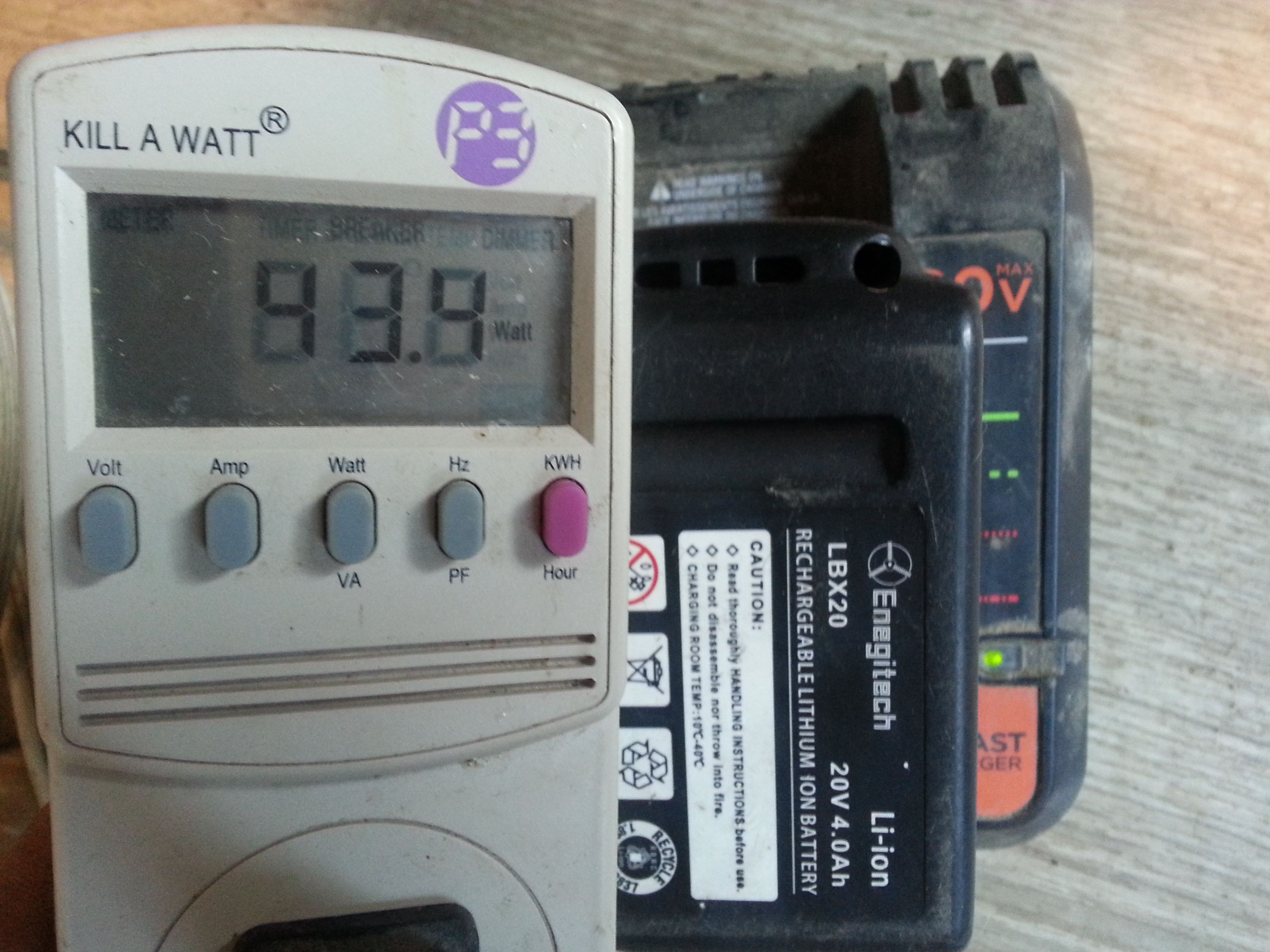
xbox360 Audit
- 0.13 KWH is the average hourly kilowatt usage
- x 2 (2 hours per day of xbox360 gaming or movies)
- = 0.26 KWH per day for 2 hours of xbox360 gaming
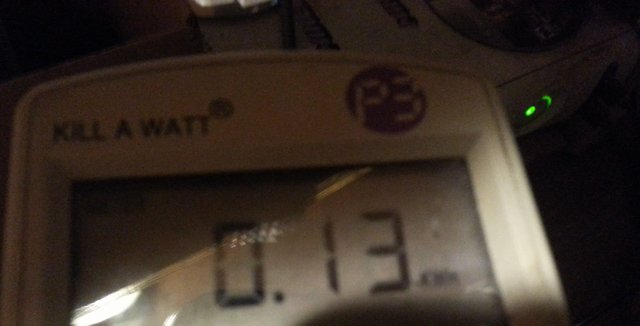
15 inch LCD TV Audit
- 0.01 KWH is the average hourly kilowatt usage
- x 2 (used for 2 hours per day of xbox360 gaming or movies)
- = 0.02 KWH per day for 2 hours of LCD TV use for the xbox360
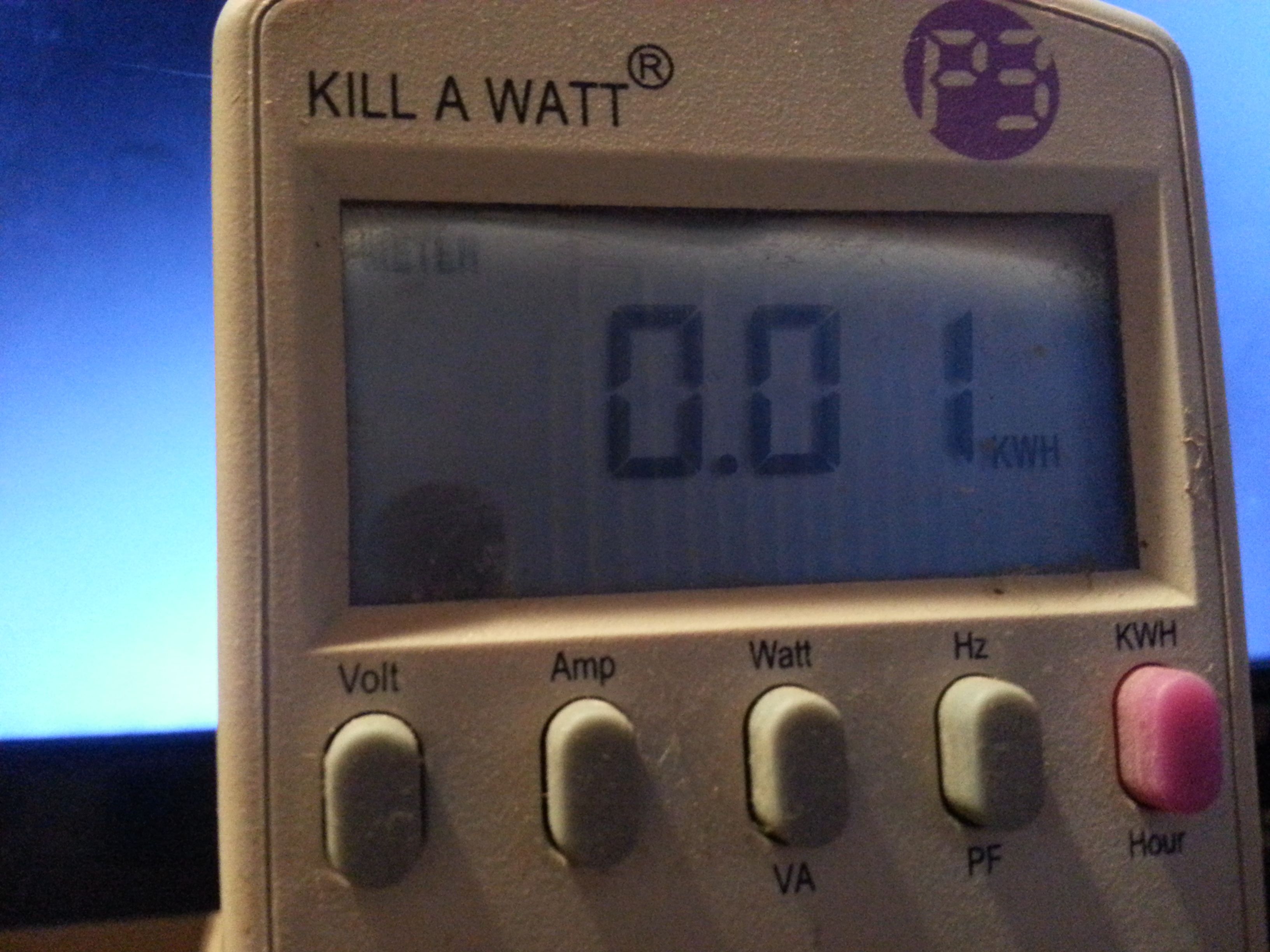
USB Charger Audit
- 0.01 KWH is the average hourly kilowatt usage
- x 8 (4 devices, each charged for 2 hours per day)
- = 0.08 KWH per day charging USB devices
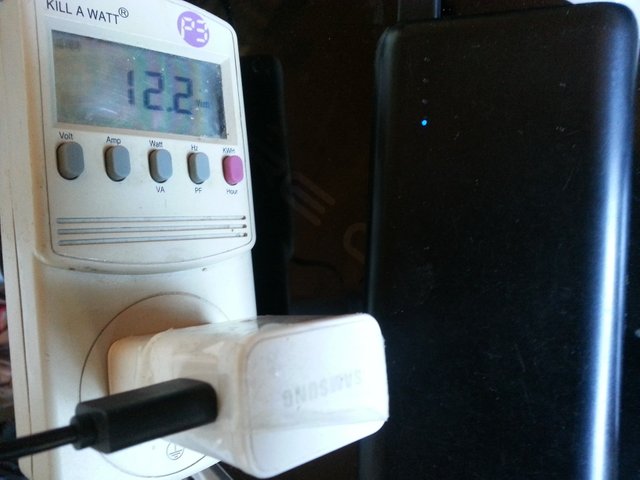
Cabin Power Audit Daily KWH Total
- 3.84 KWH per day for the Wireless Internet Router
- 3.12 KWH per day for the Chest Freezer converted to Fridge
- 0.04 KWH per day for Clothes Washing and Spinning
- 0.12 KWH per day for the 10 inch laptop
- 0.08 KWH per day for 20v tool charging
- 0.26 KWH per day for 2 hours of xbox360 gaming or movies
- 0.02 KWH per day for 2 hours of LCD TV use for the xbox360
- 0.08 KWH per day for 4 USB devices
- = 7.56 KWH total per day used in the Cabin
Calculating for the size of an off-grid or emergency Battery Bank:
- Amps = Watts / Voltage
- 7.56 KWH per day / 1000 = 7560 Watt hours per day
- 7560 Watt hours per day / 12 Volts
- = 630 Amp Hours per day
*Cabin Power Savings Update
With the surprise discovery of the wireless internet router using the most electricity, I have since plugged the router into the powerstrip of non essential electronics that I turn off at night. This will cut the router power usage in half. With the router using the most power, the savings will be significant.
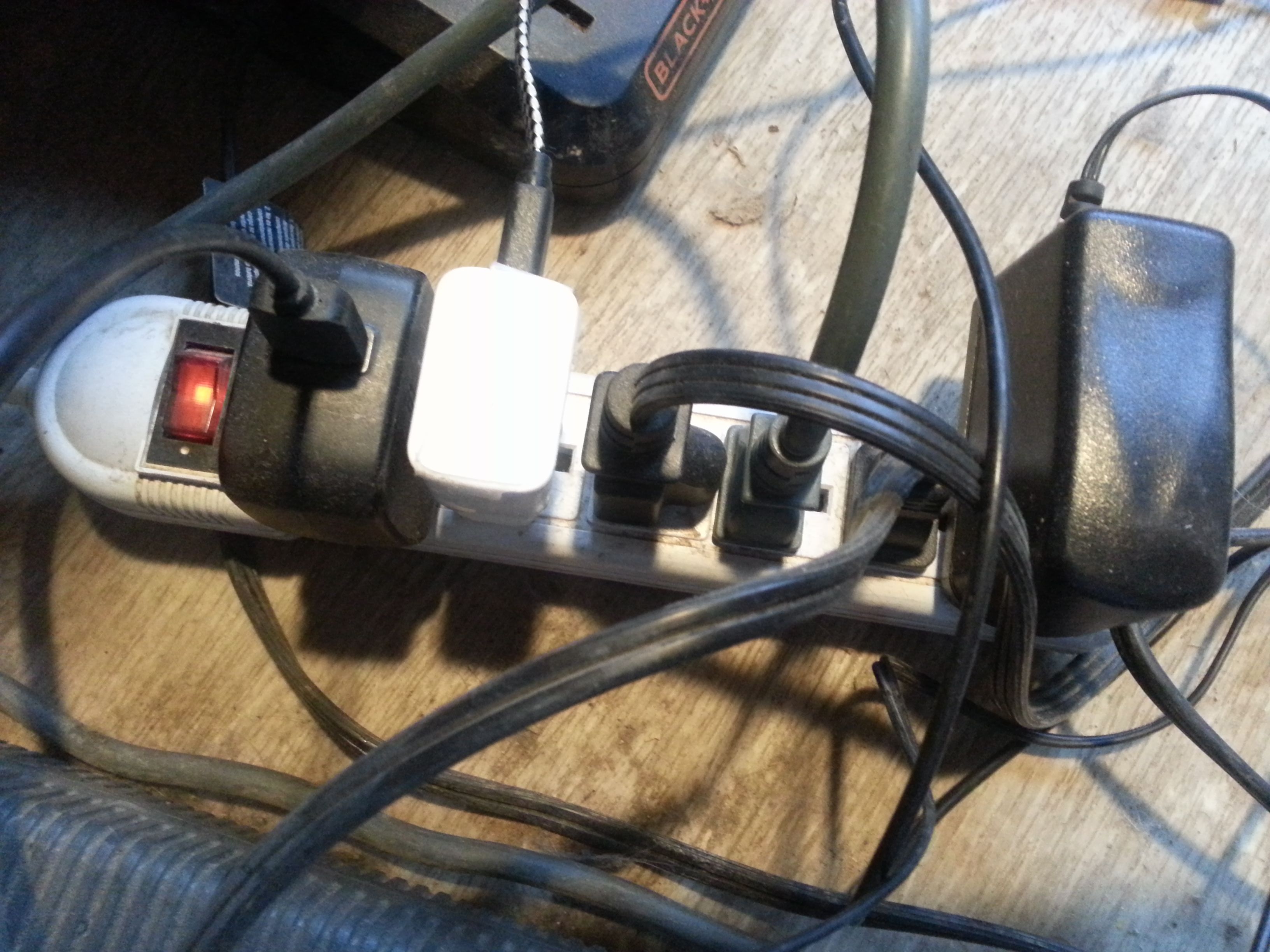
You may find these previous posts useful:
- How to Calculate the Battery Bank Size for Your Off-grid System or Emergency Power Needs
- Get More Power Out of your Off-grid System with Single Voltage Conversion
- High Efficiency Freezer to Fridge Conversion with a Plug and Play Electronic Thermostat
- Compact Clothes Washer and Spinner. Great for off-grid and small living spaces.
- Our Solar Powered Cabin Setup
Have a great day!
Great post,, and a nice tool you feature here! We can learn SO much from these..
People will be shocked if they use an electric water heater and learn that they use the same as around 100 or more laptops!
That's so true that electric heating uses a lot of electricity, I was sure to avoid it with the solar panel system. We are going to experiment with other forms of heating to cut back on our wood use. After we grow composting material this summer, we will try coiling a garden hose in the center of a hot compost pile for hot showers and pre-warming water, for example. I can see how a solar water heating setup could be useful as well. I'll be sure to add the #ecotrain tag first on my eco-minded posts. Thanks @eco-alex :)
Nice! Such a power meter is really super useful. Everyone should have one, just to know what draws most power, and to think about whether it's really necessary. On the other hand, as your example of the washer illustrates, some of the usual suspects don't even fare so badly. The wireless router was a shocker. Never thought that it would draw more than a fridge!
We've since added the router to the powerstrip of electronics that we turn off at night. I'm sure it's good to get a rest from those wireless signals once in a while too :)
YIKES! Seeing every individual electronic being audited is kind of an eye-opener! I can only imagine what my house/ kW numbers would be.
I was just now thinking back to the old house - multiple big tv screens, laptops, dryer, furnace, electric stove, air conditioner, year round hot tub .. They would add up quick :)
did not see that one coming, router draining the most power 📊 makes me think of all those appliances with no regular use but still plugged in 24/7
That's true, any appliance or device with a remote would have the standby power usage. The xbox360 was using 2.7 watts turned off, the LCD TV was using 5 watts on standy, the TV uses 20 watts while turned on. We have a power strip that most of these are plugged into so we can just turn the power strip switch off when we're not using them :)
Release the Kraken! You got a 4.59% upvote from @seakraken courtesy of @jackdub!